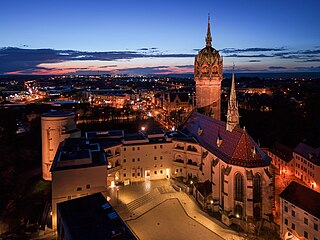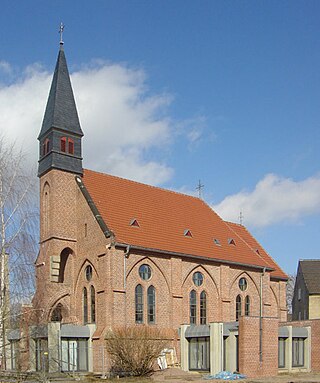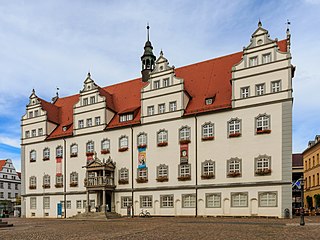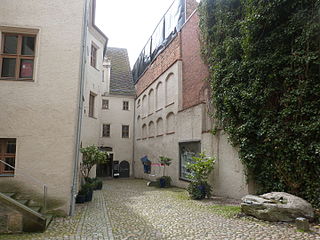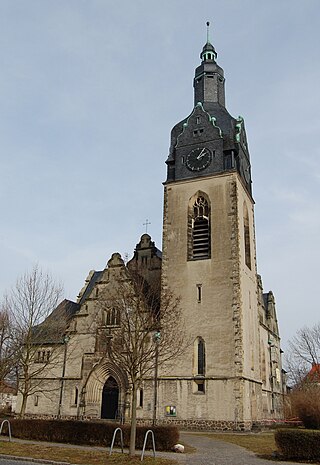9 Sights in Lutherstadt Wittenberg, Germany (with Map and Images)
Legend
Welcome to your journey through the most beautiful sights in Lutherstadt Wittenberg, Germany! Whether you want to discover the city's historical treasures or experience its modern highlights, you'll find everything your heart desires here. Be inspired by our selection and plan your unforgettable adventure in Lutherstadt Wittenberg. Dive into the diversity of this fascinating city and discover everything it has to offer.
Sightseeing Tours in Lutherstadt Wittenberg1. Schlosskirche
All Saints' Church, commonly referred to as Schlosskirche to distinguish it from the Stadtkirche of St. Mary's, sometimes known as the Reformation Memorial Church, is a Lutheran church in Wittenberg, Saxony-Anhalt, Germany. It is the site where, according to Philip Melanchthon, the Ninety-five Theses were posted by Martin Luther in 1517, launching the beginning of the Protestant Reformation.
Wikipedia: All Saints' Church, Wittenberg (EN), Website, Heritage Website
2. Schloss Wittenberg
Wittenberg Castle is the former residence of the Saxon Electors. It was completely rebuilt from 1489 onwards and was one of the most magnificent fortified castles of the early Renaissance in Germany when it was completed in 1525. After fires in 1760 and 1814 and the loss of importance of the city of Wittenberg due to the Schmalkaldic War and the Congress of Vienna, little remains of the building's former glory.
3. Unbefleckte Empfängnis
The Church of the Immaculate Conception is a Roman Catholic church in Lutherstadt Wittenberg, the district seat of the district of Wittenberg in Saxony-Anhalt, Germany. It is the parish church of the parish "St. Marien, Wittenberg", which has also included several parishes in the area since 2010.
Wikipedia: Unbefleckte Empfängnis (Lutherstadt Wittenberg) (DE), Website
4. Lutherhaus

The Lutherhaus is a writer's house museum in Lutherstadt Wittenberg, Germany. Originally built in 1504 as part of the University of Wittenberg, the building was the home of Martin Luther for most of his adult life and a significant location in the history of the Protestant Reformation. Luther was living here when he wrote his 95 Theses.
5. Stadtkirche St. Marien

The Stadt- und Pfarrkirche St. Marien zu Wittenberg is the civic church of the German town of Lutherstadt Wittenberg. The reformers Martin Luther and Johannes Bugenhagen preached there and the building also saw the first celebration of the mass in German rather than Latin and the first ever distribution of the bread and wine to the congregation – it is thus considered the mother-church of the Protestant Reformation. In 1996, it was inscribed on the UNESCO World Heritage List along with Castle Church of All Saints (Schlosskirche), the Lutherhaus, the Melanchthonhaus, and Martin Luther's birth house and death house in Eisleben, because of its religious significance and testimony to the lasting, global influence of Protestantism.
Wikipedia: Stadtkirche Wittenberg (EN), Website, Heritage Website
6. Altes Rathaus
The Old Town Hall of Lutherstadt Wittenberg is located in the centre of the old town on the market square. It is one of the most important buildings of the Saxon Renaissance and was the seat of the Wittenberg city administration from the 16th century to 2000.
7. Cranachhof
The so-called Cranach Courtyards are located in Wittenberg. In 1505, Elector Frederick the Wise called the painter Lucas from Kronach in Franconia to his Wittenberg court. Cranach lived in Wittenberg for 40 years, where he left lasting traces as one of the most versatile personalities of the Reformation period. For example, there are two of his residences in the city, in which his workshops and workplaces were located. In these monuments of the Renaissance, which are interesting in terms of architectural history, the history of one of Wittenberg's most famous citizens is combined with the building history of two houses.
8. Melanchthonhaus
The Melanchthonhaus is a writer's house museum in the German town of Lutherstadt Wittenberg. It is a Renaissance building with late Gothic arched windows and the broad-tiered gables. It includes the study of the influential Protestant Reformer Philipp Melanchthon, who lived there with his family. In 1954 the house became a museum on Melanchthon's life and work displaying paintings, prints and manuscripts by him and his contemporaries. In 1996, the building became a UNESCO World Heritage Site along with sites associated with Melanchthon's contemporary Martin Luther in Witternberg and Eisleben because of their religious significance and the lasting, global influence of Protestantism.
Wikipedia: Melanchthonhaus (Wittenberg) (EN), Heritage Website
9. Christuskirche
The Christuskirche is a Protestant church in the Kleinwittenberg district of Lutherstadt Wittenberg in Saxony-Anhalt, Germany. The congregation belongs to the church district of Wittenberg in the provost district of Halle-Wittenberg of the Evangelical Church in Central Germany.
Share
How likely are you to recommend us?
Disclaimer Please be aware of your surroundings and do not enter private property. We are not liable for any damages that occur during the tours.

